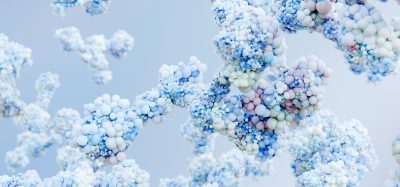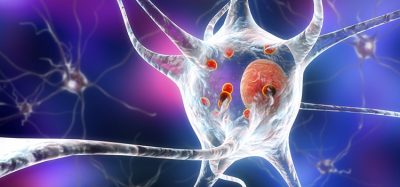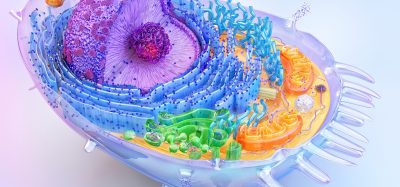New therapies boost deep brain stimulation accuracy in epilepsy
Posted: 17 September 2025 | Drug Target Review | No comments yet
In a new study, researchers have discovered that deep brain stimulation targeting the centromedian nucleus could help patients with drug-resistant epilepsy improve seizure control.


It is estimated that one-third of the 50 million people worldwide with epilepsy are resistant to anti-seizure medications. These patients, having drug-resistant epilepsy, have few treatment options beyond surgery to control their seizures. Even surgical interventions become difficult in many of these patients due to challenges in pinpointing the source of their seizures – such as the seizures originating from multiple regions of the brain.
In a recent review article, published in Brain Network Disorders, from the University Hospital La Princesa in collaboration with the University Medical Center of the Johannes Gutenberg University Mainz, researchers reviewed advanced approaches to improve CM targeting during deep brain stimulation (DBS). This is a treatment that involves an implanted device delivering an electrical current directly to areas of the brain, which has been highlighted as a promising alternative – offering partial seizure control for patients who are not eligible for surgery.
How deep brain stimulation works
In DBS, electrical impulses are delivered to parts of the brain using precisely implanted electrodes. Electrical stimulation of the anterior nucleus of the thalamus is already approved for epilepsy in Europe and Canada.
Biomarkers aren’t just supporting drug discovery – they’re driving it
FREE market report
From smarter trials to faster insights, this report unpacks the science, strategy and real-world impact behind the next generation of precision therapies.
What you’ll unlock:
- How biomarkers are guiding dose selection and early efficacy decisions in complex trials
- Why multi-omics, liquid biopsy and digital tools are redefining the discovery process
- What makes lab data regulatory-ready and why alignment matters from day one
Explore how biomarkers are shaping early drug development
Access the full report – it’s free!
Scientists estimate that targeting the CM, with its extensive cortical and subcortical connections, could be an effective avenue for treating general and frontal lobe seizures,
Attention is now turning towards another thalamic target, the centromedian nucleus (CM). Scientists estimate that targeting the CM, with its extensive cortical and subcortical connections, could be an effective avenue for treating general and frontal lobe seizures, including those associated with conditions like Lennox–Gastaut syndrome.
However, targeting the CM is not easy. It is small, deeply located and is near other thalamic nuclei – making it hard to pinpoint using standard imaging methods. This raises the risk of faulty electrode placement, leading to poor surgical outcomes. These limitations have hindered CM-DBS from being widely adopted.
Advanced approaches to improve CM targeting
“Our primary goal was to reduce targeting errors and expand the clinical viability of CM-DBS,” says Dr Torres Díaz, corresponding author of the study. “By integrating advanced imaging and neurophysiology, we can more confidently localise the CM, especially in patients with complex anatomy or structural abnormalities.”
High-resolution MRI techniques
The review highlights the use of high-resolution MRI sequences, such as magnetisation-prepared 2 rapid acquisition gradient echo (MP2RAGE), which enhances the contrast between the CM and surrounding thalamic structures for clearer anatomical differentiation. Combined with three-dimensional brain atlases and image gradient analysis – MP2RAGE enables more precise visualization of the CM.
Other MRI techniques discussed include quantitative susceptibility mapping (QSM) and edge-enhancing gradient echo with multi-image co-registration and averaging (EDGE-MICRA) – which also hold promise for improving CM delineation.
Intraoperative microelectrode recordings
Intraoperative microelectrode recordings (MER) allow surgeons to record electrical activity from deep brain structures and differentiate neighbouring tissues based on neural firing patterns. Studies indicate that the CM exhibits distinctive ‘tonic activity’ and ‘lower spike rates’ compared to adjacent nuclei like the ventral lateral nucleus. MER provides a neurophysiological signature that can guide electrode placement during DBS surgery.
Diffusion tensor imaging (DTI) tractography
DTI tractography can identify relevant brain pathways, improving stimulation by targeting specific circuits. Studies have shown that optimal CM stimulation sites are closely linked to fibre tracts connecting the CM to the brainstem, cerebellum, sensorimotor cortex and supplementary motor area. Patients whose electrodes were aligned with these pathways experienced significant reductions (50 percent or more) in seizure frequency.
DTI tractography can identify relevant brain pathways, improving stimulation by targeting specific circuits.
“Through the review of our own patient series, we found that patients who responded most favourably to CM-DBS had strong structural and functional links between the stimulation site and specific brain networks involved in motor regulation and arousal,” Dr Torres Díaz explained. “This highlights the importance of targeting not just a nucleus, but the circuits it controls.”
Toward tailored, life-changing treatment
The review offers a comprehensive roadmap for implementing CM-DBS in patients with drug-resistant epilepsy. By combining imaging modalities, electrophysiological mapping and connectivity analysis, surgical teams can accurately implant electrodes while accounting for differences in brain structure and seizure networks. This tailored approach has the potential to improve outcomes while minimising surgical risks.
“As diagnostic tools advance and improve our understanding of brain networks, CM-DBS could offer life-changing results for patients once deemed untreatable,” concludes Dr Torres Díaz. “Precision targeting is not just a technical achievement; it is a path to renewed hope for people with the most challenging forms of epilepsy.”
Related topics
Central Nervous System (CNS), Disease Research, Imaging, Neurosciences, Therapeutics, Translational Science
Related organisations
the University Hospital La Princesa, the University Medical Center of the Johannes Gutenberg University Mainz
Related people
Dr Torres Díaz (the University Hospital La Princesa)








